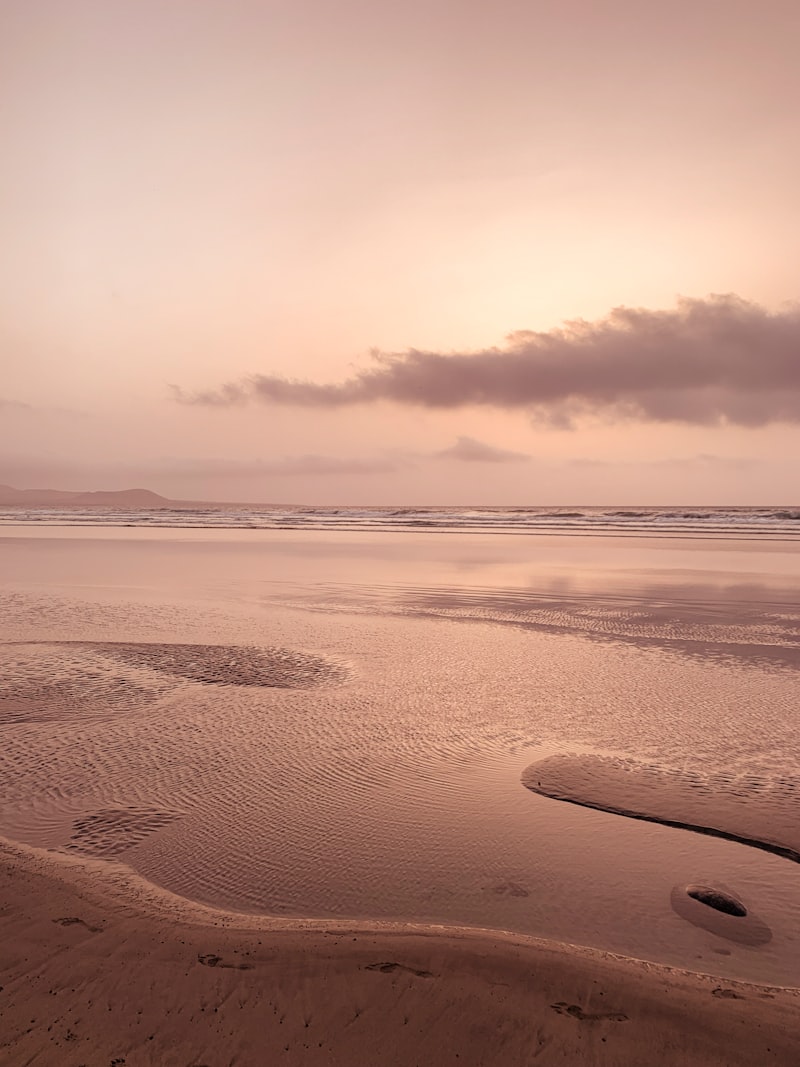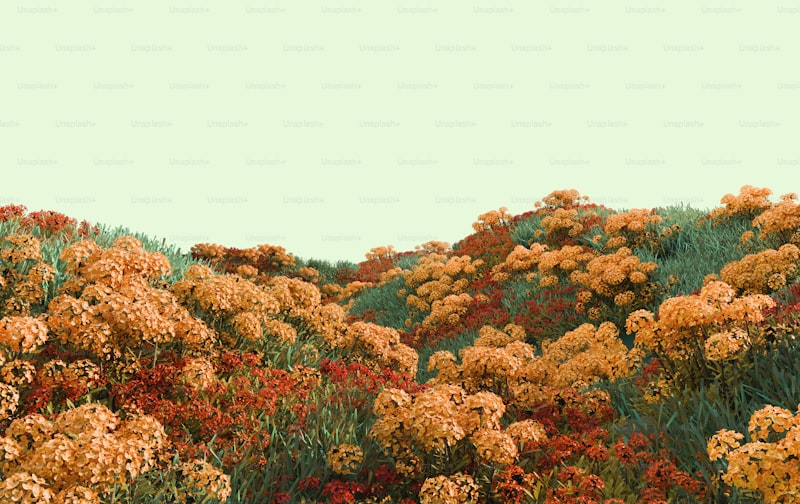Imagine standing amidst a field of wildflowers, each petal a brushstroke of color against the backdrop of a clear blue sky. These vibrant blooms aren’t just for show; they attract pollinators crucial for their reproduction, showcasing nature’s ingenious way of blending beauty with functionality.
Delve deeper into the ocean’s depths, where bioluminescent creatures light up the darkness like underwater fireworks. These living light shows, from jellyfish to deep-sea fish, harness the power of chemistry to create mesmerizing displays that defy imagination.
Even in the arid landscapes of deserts, life bursts forth in unexpected shades. Cacti adorned with blooms in shades of magenta and orange, their vivid colors a beacon in the harsh environment, signaling resilience and adaptation to extremes.
Nature’s color palette isn’t just about aesthetics; it’s a language of survival and communication. The striking stripes of a tiger or the vibrant feathers of a tropical bird aren’t just for show; they serve as camouflage, warnings, or displays of dominance in the intricate dance of life.
As we explore deeper into the forests, climb higher in the mountains, or dive into the seas, we uncover nature’s hidden treasures of color. Each shade, from the subtlest pastels to the most intense primaries, whispers tales of evolution, adaptation, and the sheer beauty of our planet’s biodiversity.
Unveiling Nature’s Secret Palette: Exploring Hidden Colors in the Wild
Nature’s secret palette goes far beyond the basic greens and browns we often associate with the wild. Dive deeper into the heart of any ecosystem, and you’ll uncover a vibrant tapestry of colors that rival even the most vivid of human-made creations.
Take, for instance, the Amazon rainforest, a lush oasis teeming with life. Here, beneath the towering canopy, you’ll find plants adorned in shades of emerald, jade, and chartreuse. These greens aren’t just colors but a symphony of chlorophyll, adapted over millennia to harness the sun’s energy and thrive in the dappled light.
But it’s not just green that dominates the landscape. Venture further, and you might stumble upon flowers in every shade imaginable – from the fiery oranges of marigolds to the delicate blush of orchids. Each bloom is not only a testament to nature’s beauty but also a strategic lure for pollinators, ensuring the continuation of life in a delicate dance of color and scent.
Even the animals play their part in this grand spectacle. Consider the resplendent quetzal, a bird whose iridescent feathers shimmer with hues of azure, jade, and ruby. These colors aren’t just for show; they serve as signals in a complex language of courtship and territoriality, where each shade conveys a message that words cannot.
Nature’s palette isn’t limited to the tropics, though. Even in the arid deserts, where water is scarce and life seems sparse, there are colors to be found. Picture the sunset over a sand dune, where the shifting sands reflect shades of amber, ochre, and rose as the day draws to a close.

Whether in the depths of a rainforest or atop a windswept mountain, nature’s colors are a reminder of the world’s infinite creativity. They invite us to look closer, to marvel at the intricacies of life, and to appreciate the beauty that surrounds us – a beauty that, despite its brilliance, remains one of nature’s most enduring secrets.
Beyond the Visible: Revealing Nature’s Hidden Colors Through Scientific Discovery
Imagine a forest where leaves don’t just appear green but shimmer with hues of reds and purples that evade normal sight. These hidden colors, often masked by chlorophyll, come alive through advanced imaging techniques developed by scientists. By delving deeper into the molecular structure of plants, researchers have uncovered pigments like anthocyanins and carotenoids, which paint leaves and fruits in stunning shades that defy the usual spectrum.
Moreover, beneath the ocean’s surface, where sunlight fades into darkness, lies a world of bioluminescence—a spectacle of natural light produced by marine organisms. These creatures emit colors ranging from cool blues to radiant greens, serving as both camouflage and communication in the deep sea’s twilight zone.

Even in the animal kingdom, colors play a crucial role beyond mere appearance. From butterflies with iridescent wings that dazzle predators to chameleons that change color to blend into their environment, nature showcases a palette of adaptive brilliance.
Scientific breakthroughs continue to peel back the layers of this hidden world. Researchers are developing new technologies to detect and interpret these colors, offering insights into ecological health, climate change impacts, and even potential applications in industries like textiles and medicine.
As we journey deeper into understanding nature’s hidden colors, each revelation sparks new questions and inspires further exploration. What other mysteries lie beyond the visible spectrum, waiting for us to uncover their secrets? Nature’s palette is vast and ever-evolving, reminding us that the true beauty of our world often lies just beyond what meets the eye.
The Art of Camouflage: How Nature’s Hidden Colors Protect and Inspire
Imagine a chameleon effortlessly changing its skin color to match the leaves it rests upon, or an octopus morphing its texture and hue to vanish into the seabed. These are not mere tricks of nature but intricate strategies honed over millions of years. Each adaptation serves a dual purpose: survival and inspiration.
The depths of the ocean are home to creatures like the leafy seadragon, whose leaf-like appendages sway gently with the currents, mimicking seaweed. In the rainforests, the jaguar’s rosette-patterned coat breaks up its outline amidst dappled sunlight and foliage shadows, making it a ghostly predator in the dense undergrowth.
But beyond survival, nature’s camouflage is an endless source of inspiration for human creativity. Artists, designers, and engineers study these natural marvels to develop technologies that mimic nature’s ingenious designs. From military applications to fashion and architecture, the principles of camouflage inform innovations that blend functionality with aesthetic appeal.
Consider how a butterfly’s wings, adorned with intricate patterns and vibrant colors, inspire fashion designers to create stunning patterns and textiles. Or how military forces study the texture and coloration of animals like the snow leopard to develop uniforms that blend into various terrains seamlessly.
Nature’s Spectrum: Unearthing Vibrant Hidden Colors Across Different Ecosystems

Have you ever wandered through a forest and been captivated by the kaleidoscope of colors that nature reveals? From the emerald green of lush canopies to the fiery hues of autumn leaves, nature’s palette is as diverse as it is breathtaking. Exploring different ecosystems unveils a world where colors aren’t just visual treats but essential signals and adaptations.
In tropical rainforests, where biodiversity thrives, colors serve multiple purposes. Brightly colored flowers such as orchids and bromeliads not only attract pollinators like butterflies and birds but also signal the presence of nectar to potential visitors. These vibrant blooms against a backdrop of deep greens create a mesmerizing contrast, drawing in both human observers and natural agents of pollination.
Venturing into coral reefs takes us beneath the surface to a realm of underwater color symphonies. Here, fish adorned in electric blues, yellows, and reds dart among intricately patterned corals. Each color and pattern serves a survival function, from camouflage to communication and warning signals. The coral itself, often in shades ranging from pastel to neon, not only shelters marine life but also adds to the underwater tapestry of colors that astonish divers and researchers alike.
Moving to arid deserts unveils a different spectrum, where earth tones dominate. Yet, hidden among the seemingly monotone landscape are bursts of vibrant life. Desert blooms in shades of purple, pink, and yellow emerge after rare rain showers, showcasing nature’s resilience and adaptability. These ephemeral displays attract insects and desert-dwelling animals, playing a crucial role in the desert’s fragile ecosystem.
Even icy polar regions, often thought of as stark and colorless, surprise with their hues. From the shimmering blues of glacial ice to the iridescent greens and pinks of algae under the ice, these colors are not just beautiful but indicators of environmental health and change. They offer insights into climate conditions and the delicate balance of life in extreme environments.
Nature’s spectrum of colors isn’t just a visual delight; it’s a language of survival, adaptation, and evolution. Each hue tells a story of interconnectedness and resilience, reminding us of the wonders and intricacies of our natural world. As we uncover more about these hidden colors across different ecosystems, we deepen our appreciation for the beauty and complexity that surrounds us, urging us to preserve and protect this kaleidoscope for generations to come.
From Ocean Depths to Forest Canopies: Capturing Nature’s Hidden Colors in Stunning Photography
Imagine plunging into the cerulean depths of the ocean, where sunlight filters through layers of water, illuminating coral reefs in a kaleidoscope of colors. Brilliant reds, oranges, and blues dance amidst schools of fish, creating an underwater masterpiece that seems almost surreal. Photographers brave these depths, armed with specialized equipment that allows them to freeze these fleeting moments of underwater beauty.
On the flip side, above ground, the lush green canopies of forests offer a stark contrast to the ocean’s depths. Here, light dapples through leaves, creating a palette of greens that range from the deep emerald of the forest floor to the bright lime of new growth. It’s not just greens that dominate—the forest bursts with the fiery reds of autumn leaves or the delicate pinks of cherry blossoms in spring. Each season paints the forest anew, offering photographers endless opportunities to capture nature’s changing wardrobe.
But nature’s colors aren’t just about what meets the eye. They tell stories of adaptation and survival, of camouflage and attraction. The vibrant hues of flowers attract pollinators, ensuring the continuation of life, while the subtle browns and grays of animal fur provide essential camouflage against predators or prey.
Photographers who specialize in capturing nature’s hidden colors must not only possess technical prowess but also an artist’s eye. They must patiently wait for the perfect light, the ideal moment when colors are at their most vivid or their most subtle. It’s a dance between photographer and nature—a symbiotic relationship where each frame tells a story of the natural world.
Nature’s Invisible Ink: Decoding the Purpose and Beauty of Hidden Colors
Have you ever marveled at the hidden colors of nature, those hues that seem almost invisible until you know where to look? Nature is a master artist, using what can only be described as invisible ink to paint stunning details across the world around us. These hidden colors serve not only aesthetic purposes but also play crucial roles in the survival and communication of countless species.
In the realm of flora, plants often use hidden colors as strategic signals. Take the vibrant hues of flowers, for instance. While we see their bright petals, many flowers also possess patterns only visible under ultraviolet light. These patterns act as guides for pollinators like bees and butterflies, directing them precisely where to land for nectar. It’s like a secret map visible only to those with the right “eyes” – a truly ingenious way to ensure successful pollination.
Animals, too, harness the power of hidden colors. Consider chameleons, renowned for their ability to change skin color. Beyond camouflaging with their surroundings, chameleons use subtle color shifts to communicate mood and intentions to others of their kind. Their skin becomes a canvas of hidden messages, readable only within the species’ social context.
In the depths of the ocean, where sunlight barely penetrates, bioluminescent creatures emit faint glows of blue and green. These hidden lights serve a variety of purposes, from attracting mates to warding off predators. It’s a mesmerizing display of nature’s ingenuity, where darkness itself becomes a canvas for ethereal colors to dance and dazzle.
Even in the microscopic world, hidden colors play a vital role. Bacteria and fungi often produce pigments that are invisible until they interact with specific chemicals or conditions. These pigments can indicate the presence of nutrients, signal harmful conditions, or even protect against UV radiation.
Frequently Asked Questions
How do scientists study iridescence in butterflies and beetles
Learn how scientists study iridescence in butterflies and beetles, exploring structural coloration and nanostructures on their wings and shells. Discover methods like electron microscopy and optical spectroscopy used to analyze light interaction and understand the biological mechanisms behind their vibrant colors.
How do plants and animals use color to attract mates
Learn how plants and animals strategically use color to attract mates. Discover the fascinating ways in which vibrant hues signal health, fitness, and reproductive readiness, playing a crucial role in species survival and evolution.
What role does color play in warning signals among insects and amphibians
Color in warning signals among insects and amphibians serves to communicate danger to predators. Bright, contrasting colors indicate toxicity or distastefulness, deterring predators from attacking.
What are examples of animals that use camouflage in nature
Discover how various animals blend into their surroundings for survival with examples of natural camouflage, including chameleons, leaf insects, and octopuses.
What is bioluminescence and which organisms exhibit this phenomenon
Learn about bioluminescence, a natural phenomenon where organisms produce light through chemical reactions. Discover which organisms exhibit bioluminescence and how it serves various purposes such as attracting prey, communicating, or camouflage.



